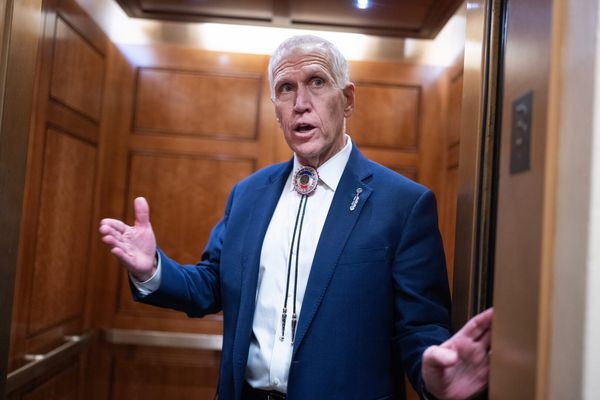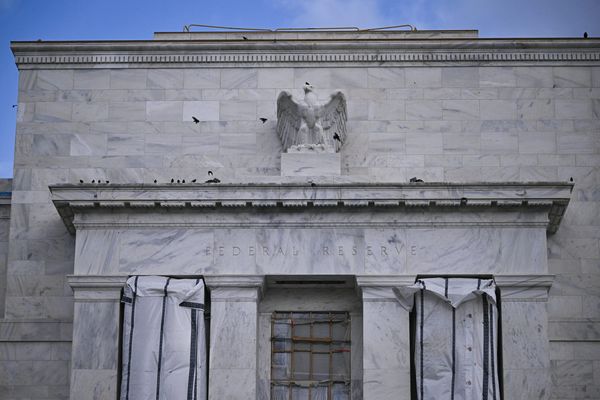Around the country, in what is shaping to be a tightly contested federal election, millions of Australians have already cast their vote, while millions more will head to polling booths tomorrow.
For the past few months, both in the lead up to — and throughout — the official six-week campaign, Fact Check has examined claims from all sides of the political divide on the issues that matter most to voters.
From climate change to a federal integrity commission, aged-care funding to debt and deficit: read on to learn what the politicians got wrong and what they got right, and for the facts.
The campaign's biggest furphy
Climate change loomed large for the Coalition in the 2022 campaign, with a slew of independent candidates challenging Liberal moderates in once safe inner-city seats on platforms that put emissions reduction and the transition to renewables front and centre.
So it was hardly surprising that the Coalition should seek to cast its climate credentials in the most favourable light.
In March, shortly before the beginning of the campaign, Prime Minister Scott Morrison claimed: "Australia is reducing its emissions by around 20 per cent."
"Australia has reduced its emissions by more than New Zealand, by more than Canada, by more than the United States, by more than Japan, by more than many countries in Europe," he added.
The biggest problem with that claim? Although the 20 per cent figure aligned with data for 2020 from Australia's National Greenhouse Gas Inventory, it was skewed by the effects of the pandemic, which saw emissions plunge temporarily worldwide.
And at the time of the Prime Minister's misleading boast, other nations hadn't yet released their 2020 data, which did not allow for a fair comparison.
Fact Check found Mr Morrison to be misleading when he made a similar claim in late 2021.
Many countries submitted their 2020 figures to the United Nations Framework Convention on Climate Change in mid-April this year, but that didn't stop government ministers offering similar versions of the claim.
Communications Minister Paul Fletcher repeated parts of Mr Morrison's claim on an episode of Q+A on May 12: "Australia's emissions are already 20 per cent down on 2005 levels, so that's ahead of New Zealand, Canada and the US."
But the recently released data for the US showed a greater reduction than Australia's (on 2005 levels) of 20.9 per cent, including land use, land-use change and forestry (LULUCF).
And removing the LULUCF component, which is often controversial in carbon accounting, and changing the starting year to 1990, when the UNFCCC data begins, pushes Australia further down the rankings, leaving it above only New Zealand.
Finally, Treasurer Josh Frydenberg included the OECD in his comparison with Australia in claims made on April 23 and May 16.
By the time Mr Frydenberg made his claims, figures for 2020 were available for New Zealand, Canada and 32 of 38 OECD countries. Yet he persisted with 2019 figures for New Zealand ("4 per cent") and Canada ("1 per cent") and a 2018 figure for the OECD ("7 per cent").
Once again, the latest official figures showed his claims to be misleading. When comparing the same years, the 32 of 38 OECD countries for which data is available showed a 20.9 per cent decline in emissions on 2005 levels, including LULUCF.
That the Coalition continued to repeat this claim in various guises in spite of evidence to the contrary made this campaign furphy one for the ages.
Running scared
Egregious and sometimes vote-changing scare campaigns — in which spurious claims are made about what the other side might do if elected — have long been a feature of Australian elections. This time was no different.
Fact Check analysed the spread, origins and details of four such campaigns in a series of Election Scare Alerts.
From Labor, two claims dominated: a suggestion that a re-elected Morrison government would force all pensioners onto its controversial cashless welfare card program for which Fact Check could find no evidence, and a revamped "Mediscare" campaign incorrectly alleging, among other things, that the government had promised to "scrap" Medicare if re-elected for four elections in a row.
From across the aisle, the Coalition's scare tactics revolved around taxes, with members of the government pushing unsubstantiated claims that Labor planned to introduce a "sneaky carbon tax" as well as a so-called "death tax".
In debunking these claims, Fact Check and its partner organisation RMIT FactLab were able to provide crucial context.
However, the spread of misinformation was rife: in the case of Labor's cashless welfare card claims, Social Services Minister Anne Ruston was painted as the architect of an apparent plan to include all pensioners in the program.
As the scare campaign took hold, memes featuring a fabricated quote attributed to Senator Ruston — debunked as part of RMIT FactLab's election monitoring project Mosaic — were shared widely online alongside unsubstantiated claims about an extension of the use of the card.
Meanwhile, Coalition speculation that Labor would introduce death taxes if elected was reappropriated later in the campaign to discredit Labor's low-income housing policy, despite the policy not incorporating any semblance of a tax.
The misleading figures landing politicians in hot water
Whether spruiking funding records or criticising spending decisions, the use of figures not adjusted for changes in inflation, the size of the economy or population growth has been a popular tactic during the campaign.
Mr Frydenberg, for instance, claimed during his budget speech that the Coalition government had doubled aged-care funding (an issue important to voters, according to Google data analysed by FactLab).
However, adjusting the latest figures for inflation and changes in the number of people accessing aged-care services showed government funding per aged-care resident per day was only 1.1 times larger than in 2014-15.
In the same speech, Mr Frydenberg also suggested the number of Australians in trade apprenticeships was at a record level: a claim that didn't stack up when the growing population was considered.
Adjusted for population, apprenticeship levels were higher under the last Labor government.
Similarly, a claim from Labor Leader Anthony Albanese during his budget reply speech that the government had "already doubled the debt before the pandemic" was also found to be less than factual when the changing size of the economy was taken into account.
Fact Check found that between June 2013, three months before the Coalition was elected, and June 2019, seven months before the pandemic, gross debt as a share of GDP grew by 65 per cent, and net debt by 85 per cent.
Speaking of debt …
With Australia staring down the pandemic-induced economic crisis, the economy was a major focal point for the campaign, though the claims didn't always check out.
According to Mr Albanese, for example, debt and deficit had "never been higher", a claim also touched on by United Australia Party chairman Clive Palmer, who said in a speech to the National Press Club that Australia faced debt "unprecedented in the nation's history".
Historical data, however, showed far greater levels of both debt and deficit were recorded following World War II.
In a similar vein, Mr Morrison also exaggerated economic troubles, claiming during the first leaders' debate that the pandemic recession was "30 times worse than what occurred during the global financial crisis".
Experts, however, had previously told Fact Check that such a claim was misleading, confusing and probably wrong.
Shadow Treasurer Jim Chalmers, on the other hand, was found by Fact Check to be correct when he said the current government had "taxed more, borrowed more and spent more than the last Labor government".
Looking forward, meanwhile, Mr Palmer (who hopes to become Australia's next treasurer in the event his party forms government) also used his Press Club address to announce a plan to cap rising home loan interest rates at 3 per cent.
But as FactLab found, the plan was not exactly foolproof.
Experts contacted by FactLab variously described it as "nutty", "incredibly naive", "off the planet", "crazy, crazy", "a brain explosion" and more.
On matters of integrity
Yet another campaign hot topic has been the issue of a federal integrity commission, with claims about how such a commission would operate resurfacing during each of the three leaders' debates.
In the first debate, for example, Mr Albanese said the Morrison Government's proposed model "would have ministers determine whether they can be investigated or not", while during the second debate he claimed the cabinet would need to "decide whether there can be an investigation".
As Fact Check explained, the government's proposed integrity commission would have two arms: a law enforcement integrity commission and a public sector integrity commission.
In relation to Mr Albanese's criticisms, there are key differences between the divisions when it comes to how referrals would be made and whether public hearings could occur.
Under the government's plan, referrals in the public division could only be made by certain individuals including the Attorney-General, the responsible minister for the agency investigated, Commonwealth Integrity Office Holders and certain parliamentarians.
Investigations in the law enforcement division could be referred by anyone — including members of the public.
Mr Morrison, meanwhile, suggested during the third debate that the government's proposed integrity commission would have the "powers of a royal commission", including "powers of search" and "powers compelling witnesses".
While the new body would have some powers comparable to those of a royal commission — including powers to enter and search premises and compel witnesses to testify, as suggested by Mr Morrison — there are other significant differences between the two.
Fact Check explained that the Royal Commissions Act was succinct, leaving scope for commissioners to use their powers broadly. In contrast, the much longer draft bill to establish the Commonwealth Integrity Commission imposed many constraints, including how investigations could be initiated and carried out.
This distinction undermines Mr Morrison's boast in all three debates that the government's draft bill is "347 pages of legislation".
As for Mr Morrison's claim that his government's failure to legislate a national integrity commission did not amount to a broken election promise, evidence suggested otherwise.
Everything else
Away from the campaign's big issues, numerous claims made by politicians from all sides were put under Fact Check's microscope.
On the economic progress of women in Australia, both Mr Morrison and Mr Albanese were found by Fact Check to have made claims lacking vital context.
When it came to defence spending, Shadow Defence Minister Brendan O'Connor's claim that the current level of funding was similar to that which occurred under the Rudd-Gillard government was a fair call.
There was more to the story, however, in relation to Shadow Foreign Minister Penny Wong's suggestion that annual aid to Solomon Islands had been cut by 28 per cent compared to Labor's time in office.
Meanwhile, a claim made by Housing Minister Michael Sukkar that the number of first home buyers was at its highest level in "nearly 15 years", was overstated.
Moving away from Labor and the Coalition, Greens leader Adam Bandt's claim that the fossil fuel industry received $10 billion in federal government subsidies each year was judged to be overblown, while Indi independent Helen Haines was found to be exaggerating when she said the Morrison government had gagged debate in parliament more than "any other government in history".
FactLab steps up
As RMIT ABC Fact Check was busy holding politicians to account, its partner organisation, RMIT FactLab, worked to ensure online misinformation was nipped in the bud.
As part of Mosaic, an election-monitoring project funded by the Judith Neilson Institute for Journalism and Ideas, FactLab worked with a team of international researchers from the Institute for Strategic Dialogue to track and trace online misinformation narratives during the campaign.
Among investigations undertaken as part of Mosaic, FactLab examined the forces behind the conservative lobby group Advance Australia, their ties to government minister Zed Seselja and their efforts to undermine the campaign of independent ACT Senate candidate David Pocock.
The team also looked closely at the hotly contested Melbourne electorates of Goldstein and Kooyong, where independent candidates Zoe Daniel and Monique Ryan are threatening to unseat the sitting Liberal members.
FactLab has also worked in partnership with Meta to debunk misleading claims made on its sites Facebook and Instagram.
Among them were incorrect suggestions that the Australian electoral process does not guard against voter fraud as well as misleading assertions about the funding election candidates are entitled to receive.







